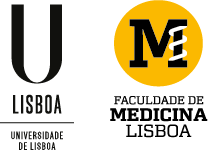
The first mission carried out in Portugal to simulate a human trip to the moon was announced yesterday and will take place in the cave of Natal, Terceira Island, from November 22 to 28. Joining mission control is doctor Eva Alves, who is part of the CEMA team at FMUL.
She is a specialist in Physical Medicine and Rehabilitation at CHULN, also has a post-graduate degree in Sports Medicine and works with the Portuguese Football Federation as a doctor for the U17 Women's National Football Team.
She was born in Loulé and went to school there until she finished secondary school. Then she packed her bags and came to Lisbon to study medicine. She finished her training in 2016, when she went on to do a general internship at the HBA and then a specific internship at CHULN, which she completed in 2022.
We spoke to her to find out what she expects from taking part in this mission and how it will add value to her knowledge and anticipate possible scenarios in a real mission to this natural satellite of the Earth.

When did you first become interested in aerospace medicine?
Space sciences have always fascinated me, so aerospace medicine was a natural discovery and an active pursuit as soon as I discovered its potential relationship with my specialty. In 2020, I applied for and completed the Principles of Aviation and Space Medicine (PASM) at Texas University (Medical Branch) in collaboration with NASA, an intensive 120-hour course aimed at doctors. Following on from this very enriching opportunity, I have been a member of the FML's Center for the Study of Aerospace Medicine (CEMA) since it was created and founded by Dr. Edson Oliveira, where I collaborate in the development of research projects and as a Free Assistant in the FML's Aerospace Medicine Curricular Unit.
You'll be part of the team involved in the simulation mission. What will your role be?
I will be part of the mission control medical team, which will consist of four doctors (myself, Carolina Moreira, Pedro Caetano and Andreia Oliveira), responsible for providing and guaranteeing clinical support to the crew (7 individuals from five countries) throughout the mission (on a shift basis) and collaborating in scientific activity. The mission control team also includes specialists in speleology, volcanism, microbiology and geochemistry.
What is the value of doing this simulation? Why in a cave? What particularities make it the closest scenario to the moon?
This project is a proof of concept. In other words, it's basically a test of the 'scenario' to validate it for possible future astronaut analog missions, since space agencies such as NASA and ESA have been looking for this type of structure and scenario to carry out their planetary geology training. This proof of concept will make it possible to test geotechnical stability and assess the possibility of turning these structures into base camps for space missions (as a form of radiation protection, for example). In addition, various clinical and non-clinical parameters will be assessed and studies carried out, which will also be an asset for Aerospace Medicine in terms of data collection.
Have you been involved in anything like this before?
This is the first time I've been involved in an on-site mission in the field of extreme medicine, particularly aerospace medicine.
Imagining that we are actually on a mission to the moon, as a doctor, what can you foresee happening? Most likely scenarios given the lack of gravity and the pressure it puts on the organs... among others.
The challenge of traveling in space, going to space, perhaps surviving for long periods of time in space is above all complex and involves taking into account and controlling a series of variables that are essential for the success of any mission. Microgravity is one of these variables and has an important impact on various systems of the human organism, and for my particular interest, on the musculoskeletal system. Radiation is another variable that is very limiting and generally harmful to maintaining good health. The most likely scenarios are varied and depend on the duration of exposure to this extreme environment, including, for example: headaches, changes in blood pressure, visual alterations, dizziness, psychological disorders, lower back pain and changes in bone and muscle mass. It is therefore essential to try to simulate exposure to these environments on Earth in order to test and find answers to the potential problems that will be encountered in space. In relation to microgravity, the changes in mechanical load result in a cascade of biochemical, hormonal and structural changes in bone, muscle and connective tissue, which interrelate in a complex way in an attempt to find a balance in the new environment, as happens in other systems.
How are you preparing your suitcase? What can't be missing on a mission like this?
Bearing in mind that I'll be outside, my suitcase won't carry more than the essentials. However, we have built a medical bag for this specific mission which includes, in addition to emergency and routine medication selected taking into account the environment in question, immobilization material, disinfection material and support material such as flashlights, bandages, repellent, etc. Various scenarios have been anticipated so that nothing fails.
What's your mood?
Enthusiastic! I'm very proud to be able to take part and represent CEMA in the first mission of its kind in Portugal, which will be, above all, very enriching.


